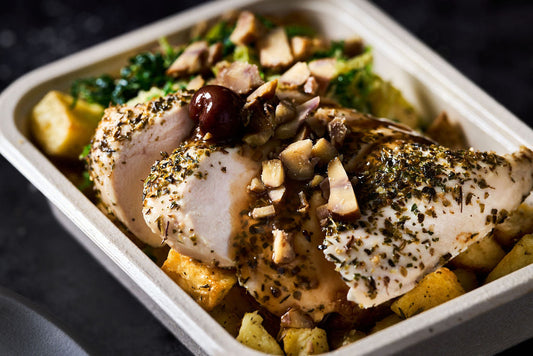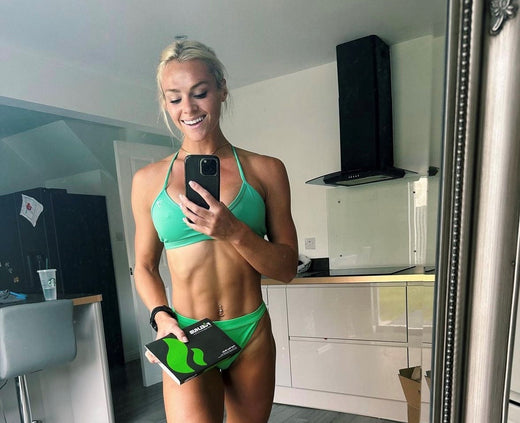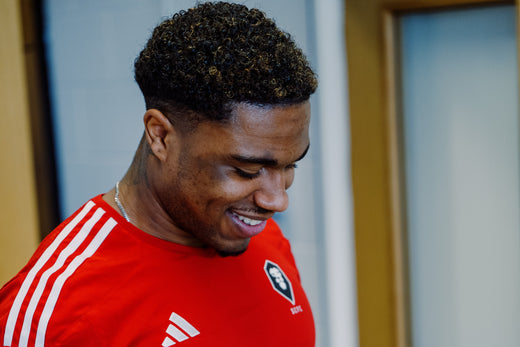Endurance cycling is no easy endeavour and demands a well-structured training plan. Whether you're a seasoned cyclist aiming for a personal best or a beginner looking to build your endurance, a carefully crafted nutrition plan is essential.
This article will guide you through fueling your body for endurance cycling, from pre-ride nutrition to post-ride recovery. Let’s dive in.
Pre-ride
Just as a runner requires the right fuel before a race, a cyclist needs to prepare their body for the demands of the road. Pre-ride nutrition is essential for endurance cyclists, ensuring they have the stamina to tackle long distances without experiencing hypoglycemia or digestive discomfort. Let's delve into the key aspects of pre-ride nutrition:
Nutrition
To ensure you start your ride with a full tank of energy, you’ll need to increase the glycogen stored in your muscles and liver. One way to do this is by serving up a hearty portion of slow-burning, high-glycemic carbohydrates the night before your ride. Some good options are quinoa, whole-grain rice or sweet potato. It’s important to incorporate vegetables and lean protein for added nutrients. Our sweet-chilli chicken burrito is a popular choice, loaded with carbs and 31 grams of protein.
On the day of your ride, begin with natural, solid food that provides long-lasting energy — our banoffee protein overnight oats make a great option.
Timing
While it can be tempting to carb load just before a long ride, eating a large meal immediately before endurance cycling can lead to nausea. It’s best to aim to finish your last big meal at least two to three hours before your ride — this allows your body to properly digest the food before you hit the road.
Hydration
Proper hydration is essential before a big ride. Aim to drink 500-750ml of water in the morning before your ride, but try to avoid going overboard — you want to be ready to roll when the race begins!
On-ride
During your ride, you’ll be exerting a lot of energy and burning a lot of calories. Depending on your speed, you could be burning between 400 and 700 calories per hour of your ride. To maintain your pace and energy levels during your endurance cycle, proper nutrition is crucial. Consider the following:
Nutrition
Rather than working on a “calorie out calorie in” model during your ride, it’s best to focus on ingesting the correct amount of carbohydrates to stay energised. While individual needs vary, a good rule of thumb for rides longer than 90 minutes is to consume 60 grams of carbohydrates per hour. Experimenting with different amounts during training rides will help you determine the right intake for you.
Timing
For the first half of your ride, you’ll want to be predominantly fuelled by slow-release forms of carbohydrates that will keep up your glycogen storage levels. Halfway through your ride, switch up your nutrition and opt for faster-digesting forms of carbohydrates. Gels are often a popular choice, but dates are another great natural way to get in those fast-releasing carbs.
Post-ride
Don’t be fooled — your ride might be over, but your nutrition still needs plenty of attention. Proper recovery will help you feel rested and ready to tackle your next adventure.
Nutrition
Once your ride is over, focus on fueling your body for optimal recovery. To minimise muscle soreness and promote recovery, try to consume protein in combination with carbohydrates post-cycle. This powerful duo helps replenish depleted glycogen stores in your body. Our naked chicken burger with chips & chipotle mayo is a great choice, boasting 44 grams of carbs and 53 grams of protein.
Timing
Immediately after your ride, load up on carbohydrates once again to replenish those depleted glycogen stores. This rapid replenishment promotes muscle repair and prevents soreness. Then, a few hours later, enjoy a well-balanced, nutrient-dense meal to refuel your body. Consuming a combination of carbohydrates and protein within a few hours of your ride is ideal for your recovery.
Endurance cycling nutrition tips
Here are some of our top nutrition tips that could make all the difference during your endurance cycle.
- The night before your ride, try to stick to the types and amounts of food your body is accustomed to. That way you protect yourself from feeling unnecessarily nauseous during your cycle.
- Avoid food fatigue on long rides by mixing things up. Consider incorporating non-bar options like sandwiches, flapjacks, or dried fruit into your fueling strategy.
- Incorporate electrolyte-rich sports drinks or electrolyte tablets into your on-ride nutrition plan. These products can help you stay hydrated and maintain optimal electrolyte levels, especially during hot weather or intense rides.
- Make sure you properly plan ahead — pack your nutrition essentials well before your ride, so you won’t be caught short.
- Listen to your body. Pay attention to your hunger and thirst cures, and find what works best for you.
Go the distance with Fuel Hub
Creating your own endurance cycling training plan can be rewarding, but it’s also time-consuming and expensive. Same time and money with Fuel Hub’s specially designed Cycling Meal Plans. Whether you’re a novice or an expert, you can cut out the hassle and spend more time focusing on training with our nutritionist-approved meal plans on your side.



